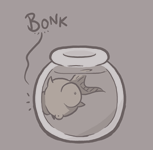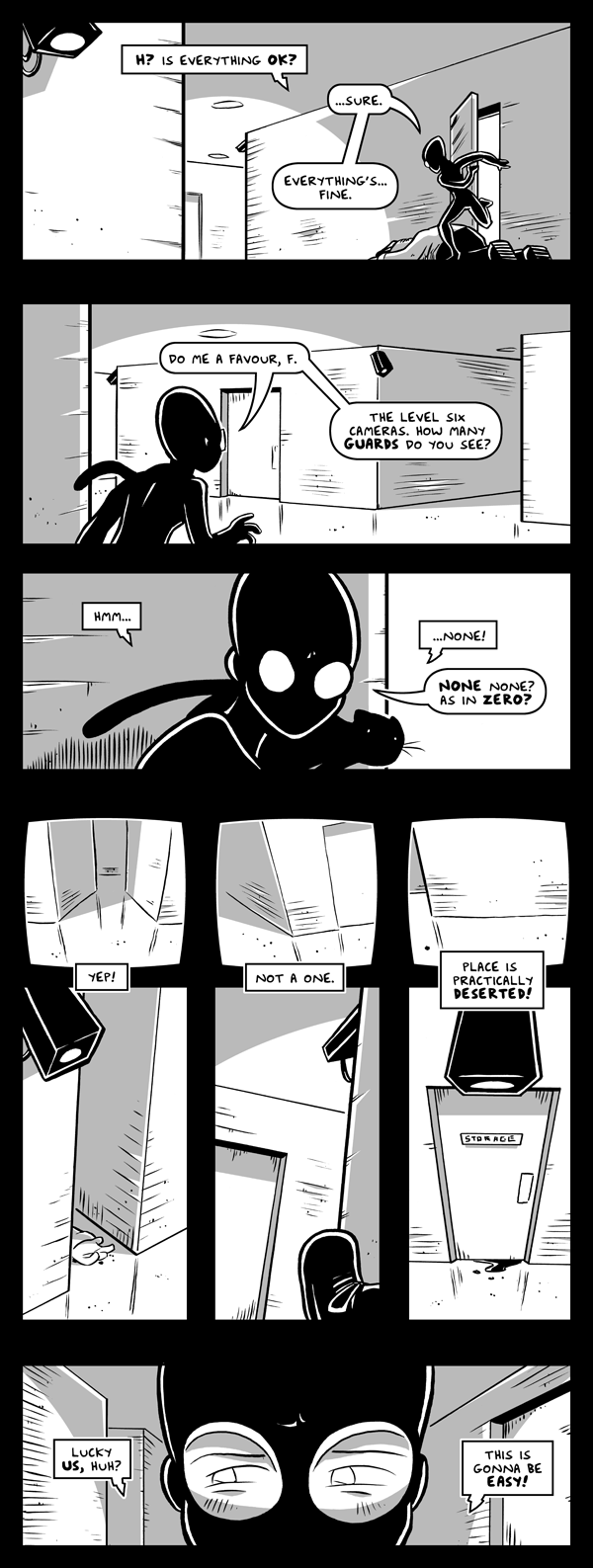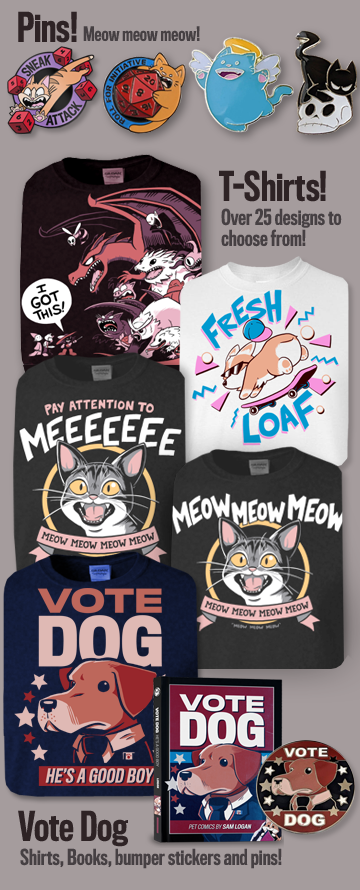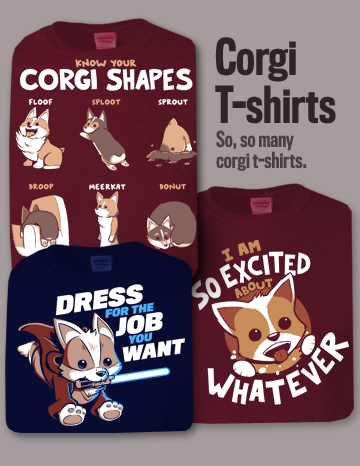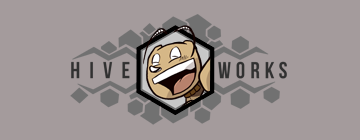San Diego
San Diego Comic-Con is only a few weeks away! And after taking last year off to recoup mentally, I'm really excited to throw myself back into the five-day fray.
Now, this is the part where I would normally encourage you to go to the show, too. Only...if you weren't already going, it looks like you're not going at all. Passes for every single day of the show are already completely sold out!
It's kind of frustrating to be an exhibitor at a show where you can't actually tell anyone to come see you! But what can you do? The convention center is only so big, and the show is selling out earlier and earlier every year. Hopefully some of you Sam and Fuzzy readers out there already have tickets. And for anyone who doesn't... I'll try to make as much of my funky comic-con swag available online as possible!
-Sam Logan
Discuss on the forum
Sam and Fuzzy Q & A: 2-bit Edition
Got a question you want answered? Just drop me an email with "Q & A" in the subject line!
"You mentioned that you work pen on paper and scan it in. How do you scan it so the lines still look smooth and not all pixeley? Whenever I scan line art and convert it to black and white mode, it gets all blocky because it loses its anti-aliasing." -Jamie
I've actually been getting variations of this question pretty regularly for the last six years. I'm glad I have a public place to answer it now!
Scanning your art in Black and White (2-bit) mode creates an image where every single pixel is either pure black or pure white. Your lines will be crisp, uniformly black and easy to work with on the computer... but they'll also have those harsh, pixely edges that Jamie is talking about.
A greyscale or colour image, on the other hand, can use intermediate shades of grey pixels to "anti-alias" the image... to soften the lines and make them look smooth on a monitor. Just look at the image below to see the difference.

Still, I wouldn't recommend scanning your linework in greyscale or colour. It just creates a big mess... the lines will all be slightly different shades of black, and the paper will all be slightly different shades of off-white. It looks muddy, and it's hard to edit on the computer.
So here's the thing to do: scan in black and white mode, but scan really large. (I usually scan my comics in 600 DPI.) Then, after you've scanned your art (and saved it), convert it to colour or greyscale and resize it to be smaller. This will take those humongous pixelated black lines and shrink them to small, smooth, anti-aliased ones that will look great in web publishing.
But best of all, you'll still have those gigantic hi-res pure black and white versions of your work, which you can use later for print publishing and books. Bonus!
"What are the dimensions of the paper you draw your comic on? I'm getting ready to start production on my own comic this week and I was just curious as to what paper I should be working with." -Christopher
Personally, I use 11 x 14. Although some creators use smaller size paper -- I used 8 1/2 x 11 for years before moving up -- as a general rule, most cartoonists tend to draw their comics on paper much larger than the size it will eventually be reprinted at.
The reason for this is pretty straight forward... drawing large and then shrinking it helps make your artwork look tighter and more detailed, and makes any little mistakes or imperfections less noticeable. I've been thrilled about how much nicer my art has looked since I moved to working on bigger paper... even though it takes a bit longer to draw, I don't think I'd ever go back.
"I was reading some of the earliest comics for giggles, and I found an object that looks vaguely familiar in comic 261. Is this related to the current story, or am I swinging completely left field here?" -Lovova
That would be telling, Lovova! If that is your real name.
Our next comic arrives on Monday. See you then!
-Sam Logan
Alpha-9
The Terrible Thing of Alpha-9 is a really stellar animated short brimming with pure, gorgeous cartoon visuals. If you haven't seen it yet, I heartily encourage you to do so! Just try not to think too hard about why this micro-budget independent film, made almost entirely by one man, looks so much better than about 99 percent of the multi-million-dollar animated productions being produced for mainstream television and film. It will only make you feel crazy inside.
Did you know that I have a Twitter account? If not... a world of exciting discovery awaits you! Before the creation of my twitter feed, it was completely impossible for anyone to learn about how asinine my twitter feed is. But good news, friends. Those dark ages are over.
-Sam Logan
- Bad Machinery
- Boxer Hockey
- Broodhollow
- Clique Refresh
- Dawn of Time
- Dead Winter
- Dinosaur Comics
- Dr McNinja
- Dumbing of Age
- Filibuster
- Gastrophobia
- Gunnerkrigg Court
- Gunshow
- Hijinks Ensue
- Octopus Pie
- Ornery Boy
- Overcompensating
- Questionable Content
- Scenes from a Multiverse
- A Softer World
- Wasted Talent
- Weregeek
- Wondermark

